Well, i'm still alive, even though the shed is no more. After spending almost all the summer month's doing the garden, relocating the 'caravanshed' to the garage, I managed to find the time to reply to an invite to John's FoW game, set in the Desert, Mid war period. German Panzers/Panzer Grenadiers/Italian iron coffins, versus an Indian Division force, with tank support.
The table was symmetric, along the diagonal axis. The game setup was a counterattack scenario, with the Indian division as the defenders. The Germans were to counterattack an attempted breakout by the Indians. As they were infantry, this was to be an intriguing problem for an all infantry - non motorised force.

Effectively, the Indians would win by denying the Germans sole command of either of the objectives, just by being able to remain within a certain distance of them. Apologies here for the lack of detail regarding the 'rules', I'm not fully familiar with them, and try to play the game as opposed to the rules. This can and does often result in horrendous howlers. This evening it didn't.
John provided his services as host and FoW rule mechanics guru, Ian and Gavin the command of the Indian Division, with Steve and myself the Germans with supporting Italians. Once the initial game dice had been rolled, a plan was needed to try and win the game, or at least counter the Indians possible plan of action. The Indians, when dug in, would be pretty hard to winkle out of prepared positions, and whilst with 25pdr support, and a troop of Deacon 6pdr a/t, the main problem would revolve around the 3 Churchills that were available.
The Germans had 2 armoured Pzr Gren platoons, a battery of 150mm guns, some Pak40's, a troop of 5 PzrIII's long 50mm, and a troop of 5 Italian M13's. Short on quantity, the German force was extremely mobile, its greatest asset, and one which we intended to exploit as much as we could. If we could contain the on table Indians, secure and hold the centre with the M13's, we could then race across the table to the other objective and dig in, holding our armour - the PzrIII's supported by the Pak's to try and contain the expected counterattack on us by the Churchills.
The Indians deployed all on table except the reserve forces of the Churchill's and a platoon of infantry. They could have chosen the Deacons, but chose not. The Deacons were placed in ambush on table, possibly to try and confuse us, but we felt that this was a major mistake. The Churchill's should have been on the table from turn 1. That's the nature of the game though, and you play you're hand as you're dealt.
The Indians dug in in their quarter, some in the buildings, running out in positions towards the centre of the table, where their MMG's and mortars were placed. Their aim was to dominate the centre, taking the ruins on the hill by advance, and shooting into the interior of the German positions. The M13's were placed behind the hill to cover this possible move, but I had thought that this would have been done by infantry and not by the support weapons. At the rear of the Indians were their 25pdr battery, dug in as well. One of the really weird things I find with FoW is the on table deployment of supporting artillery, I just can't get my head round it!! It's not right surely...but it works.
A 6 move game, as Germans attacking, we moved first. Off we fuck to the far objective, cautiously avoiding observation from the Indian FO's for the 25pdr's and mortars. The PzrIII's supporting the Pzr Grens, the Italians moving up to the centre. I took command of the Italians and the guns, Steve the rest, being far more competent with FoW than I am.
We basically played knock for knock in the centre, putting in gunfire on the Indian support weapons, MG fire from the Italians as well, and trying to engage the dug in infantry. It didn't really work, except that the centre proved to be a quagmire for the Indians, tying them up in pins and slow attrition. Unable to move into the centre, they consequently were unable to slow us down or influence our depositions. Any movement out of their prepared positions drew down fire, and their revealing of their ambush forced them to withdraw it across to towards the open objective we were heading for. A sound move considering the special feature of the Deacons, which was a shoot and scoot rule similar to US tank destroyer tactics, utilising the terrain covering the objective.
Meanwhile, anticipation of the Indian reserves was growing. Appalling die rolling by Ian meant that we were given an almost free hand in the race across the table, but on turn 4 the Churchill's arrived, catching the PzrIII's to their rear, fronting the Deacons on an escarpment over the objective. At the same time as this, a move to attack the flank of the Pzr Grens as they came forward got caught in the open, again after appalling die rolling. The Italians were doing quite well machine gunning here, there and everywhere, going around the centre and breaking through the line of dug in infantry to come back in attacking the Indian flanking force that was attacking the Pzr Grens.
The tank attack - PzrIII's and Churchill's with the Deacons pitching in as well, started to take on a Benny Hill theme. The best description can be that it was a dust fuelled melee with desperate firing into and within, as the tanks tried for hits, bail outs and penetrative kills. To be honest, the advantage was with the Indians but converting the advantage to actuality was beyond the die rolling capacity of Ian.
As the melee grew in intensity, an attack by the Pzr Grens out of the objective wiped out an attack by Indian troops coming on as reserves, and the attack the M13's were developing behind the flank attack on the Pzr Grens, became superfluous, as the Pzr Grens counterattacked and wiped them out.
All of a sudden, realisation grew on the Indian side that regardless of the victory condition, the Indian Division had collapsed due to casualties. A decisive German victory, as there had been no real losses except some 1/2 tracks and PzrIII's amongst others light losses. A very difficult game for an all infantry force take on a mechanised force, especially given the scenario.
A very enjoyable game, in very pleasant company, and an entertaining diversion from Battle Group. A big thank you to John, Ian, Gavin and Steve.
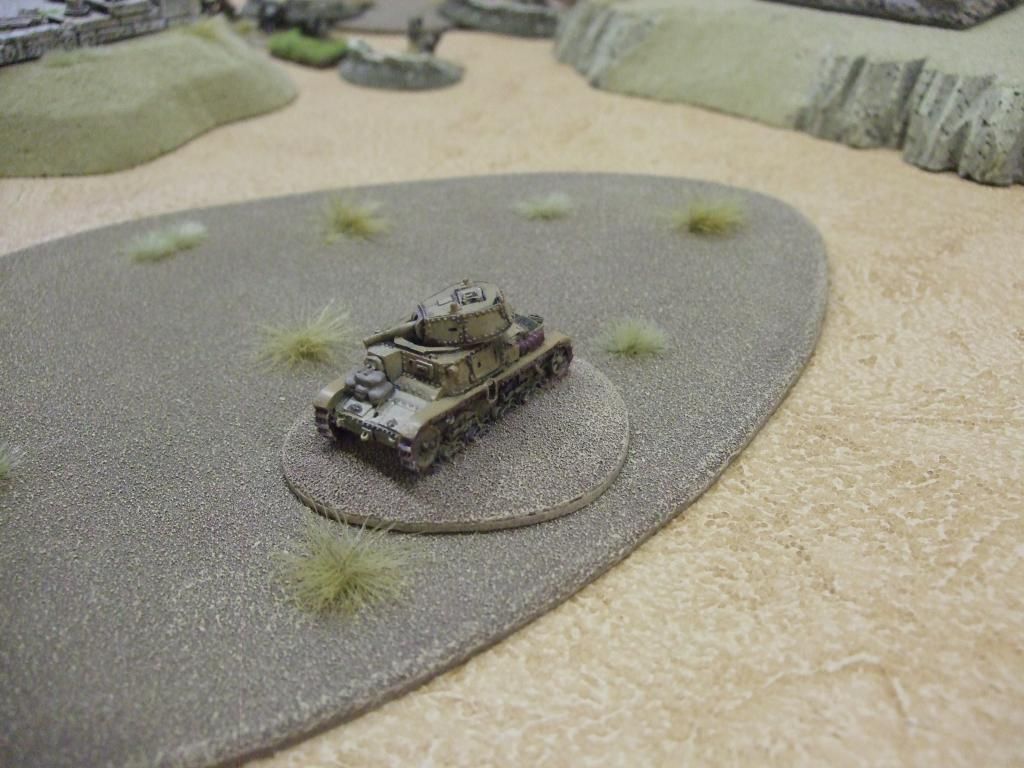
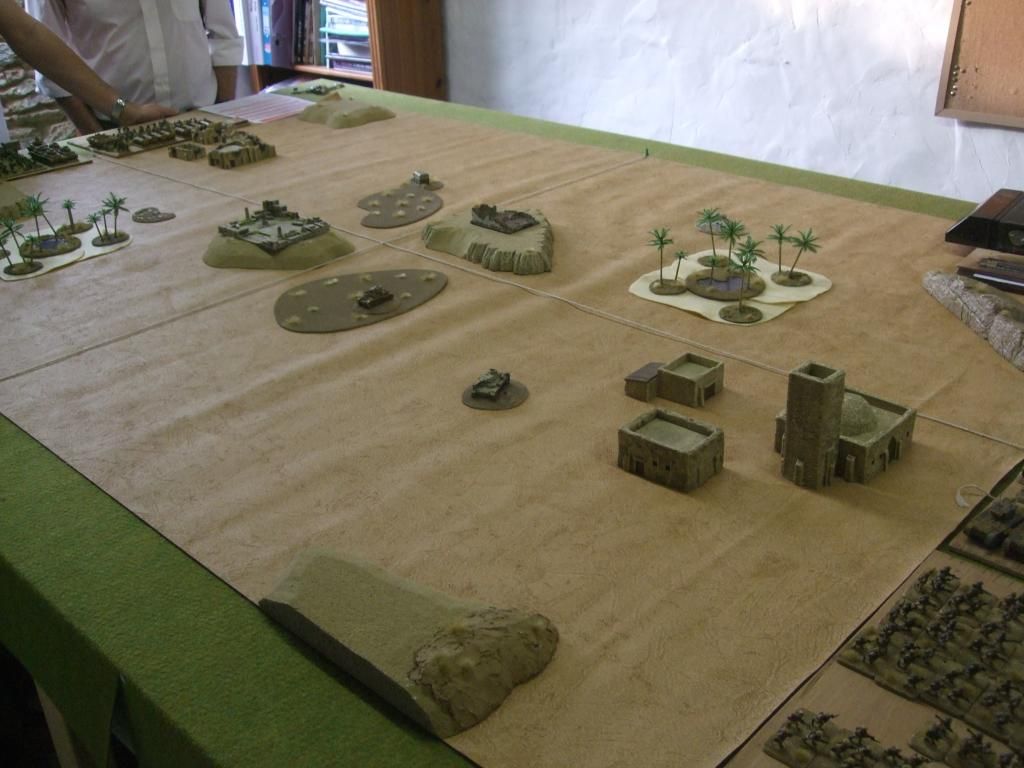
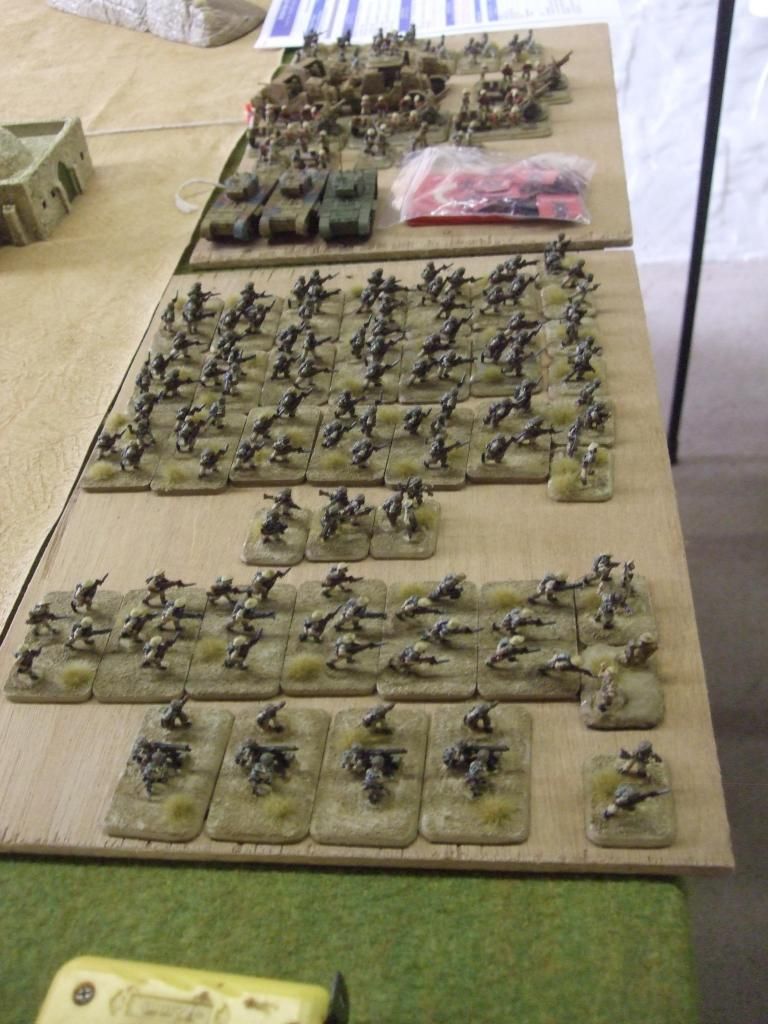

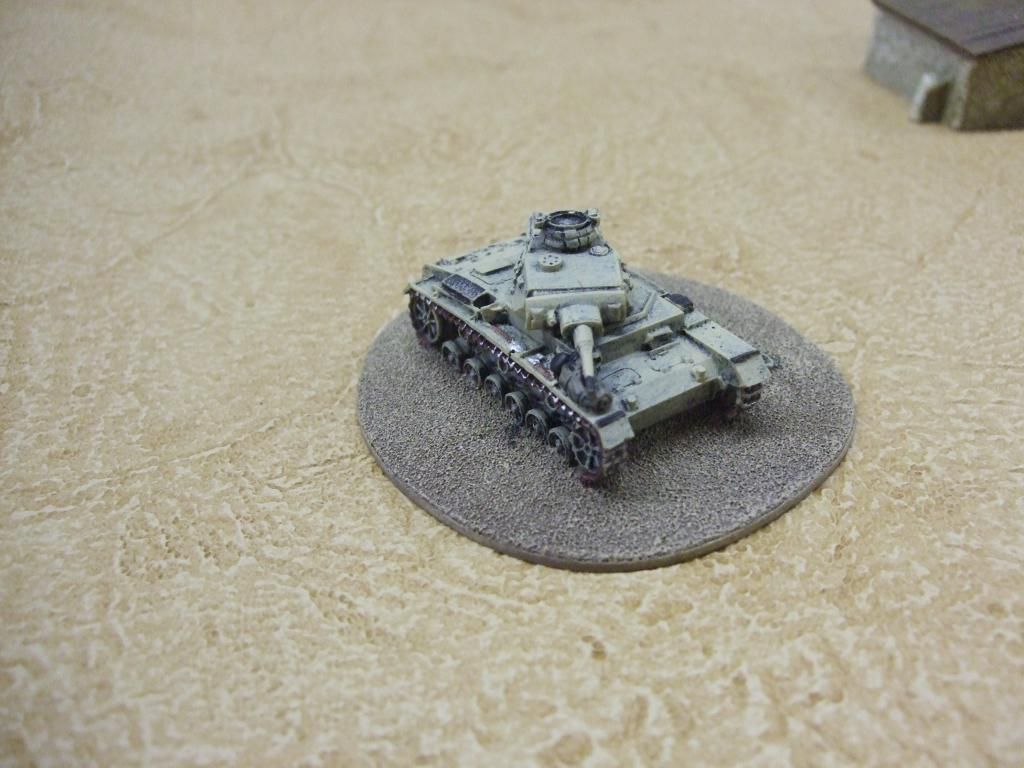
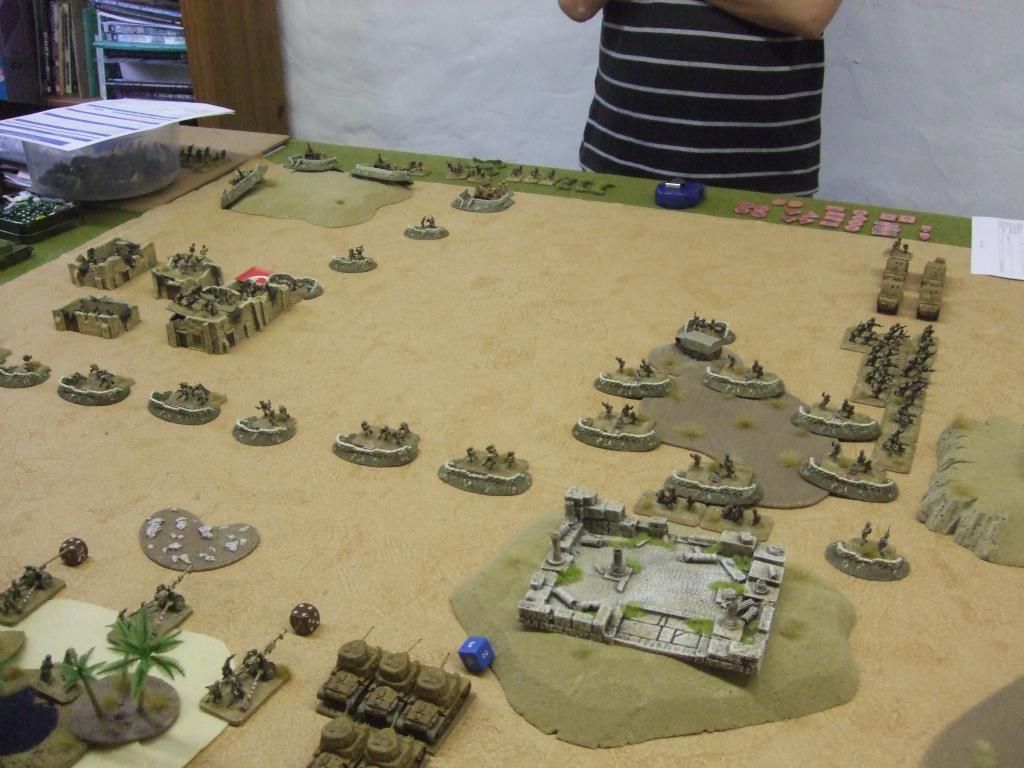
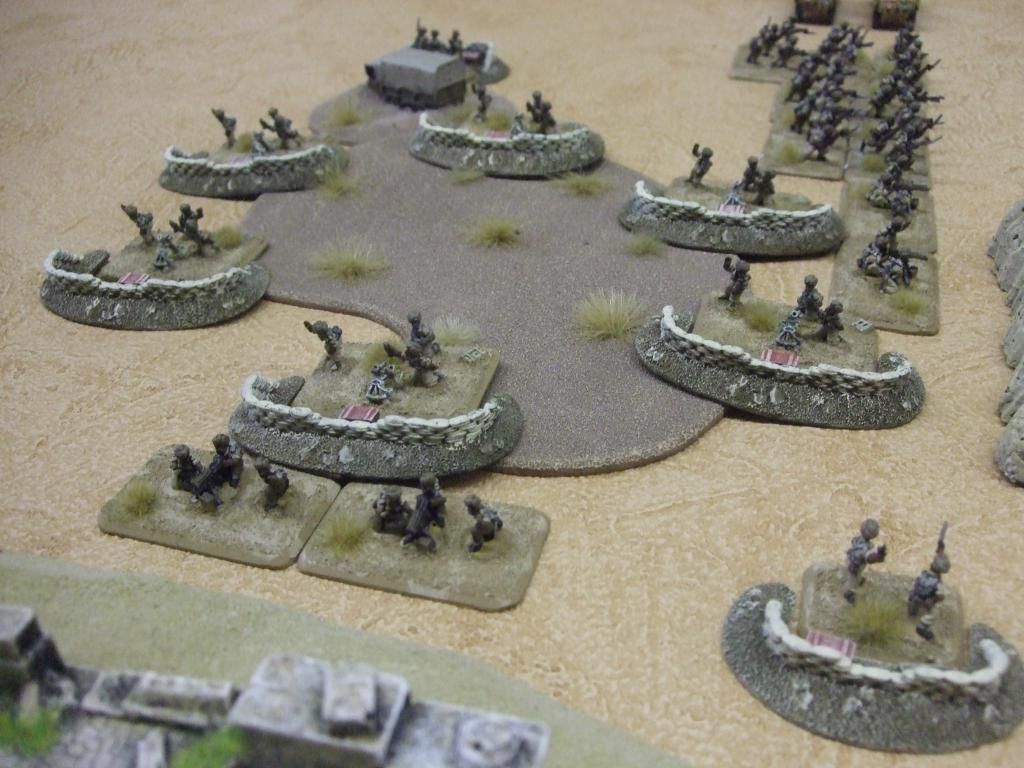
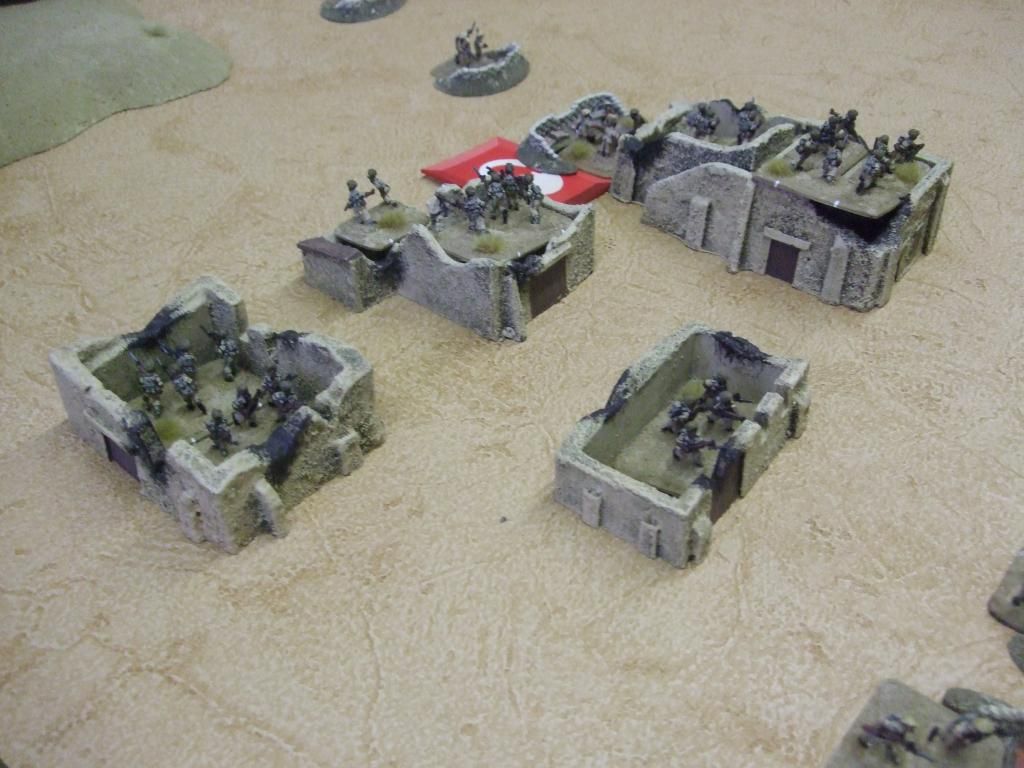
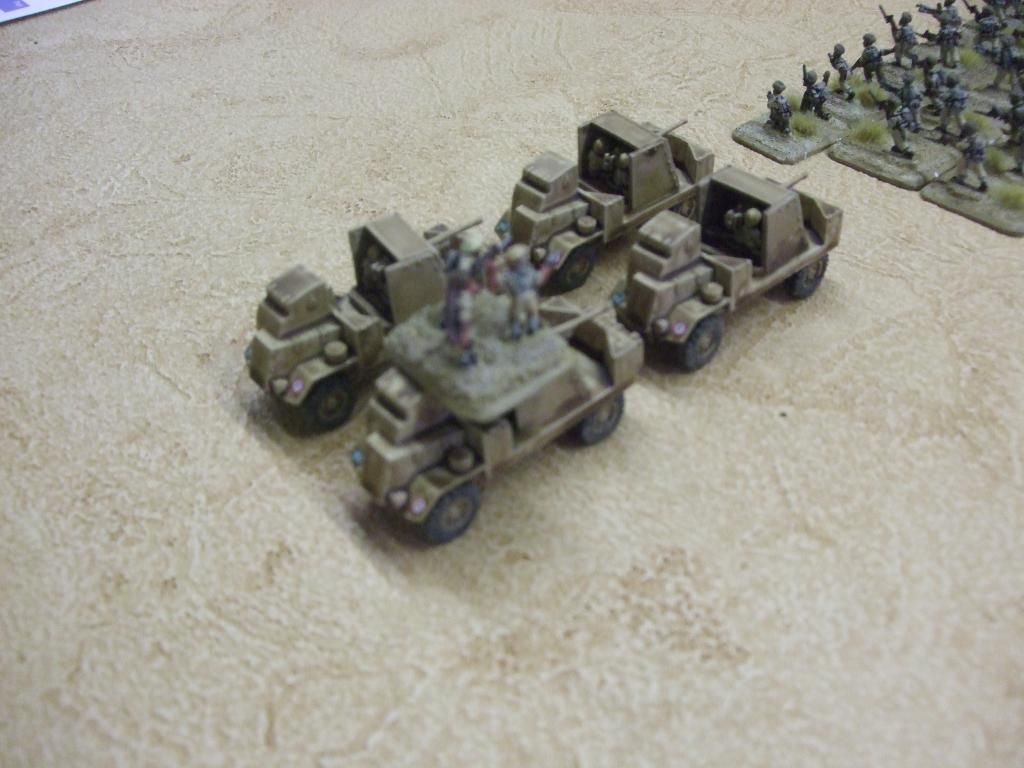
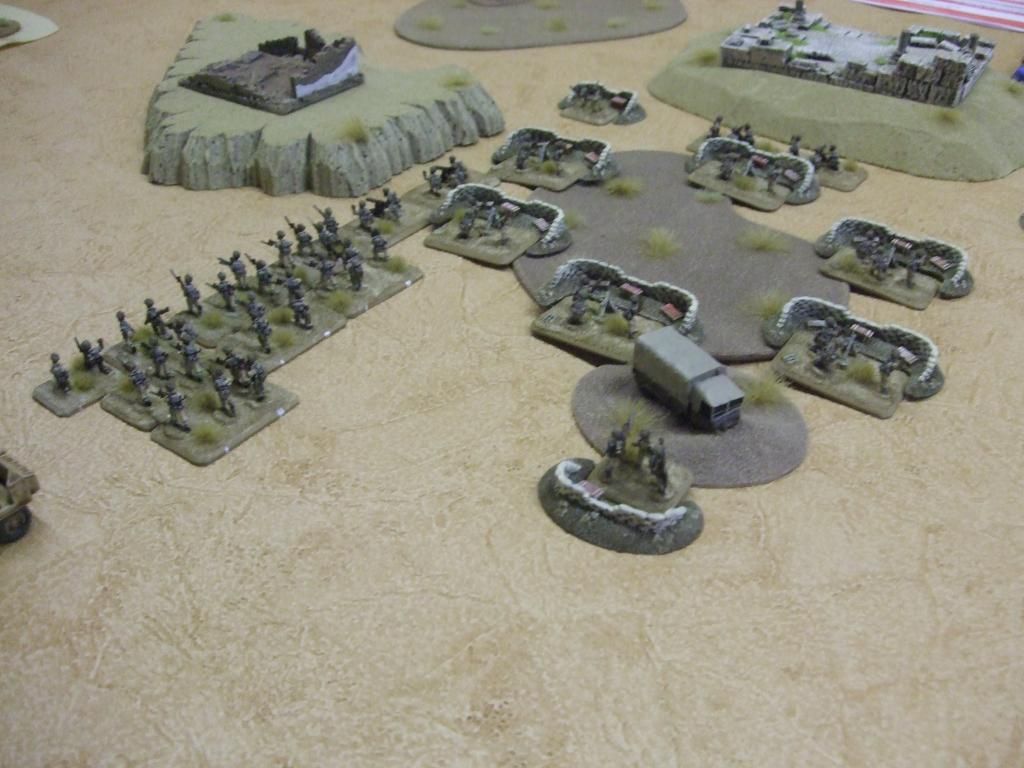
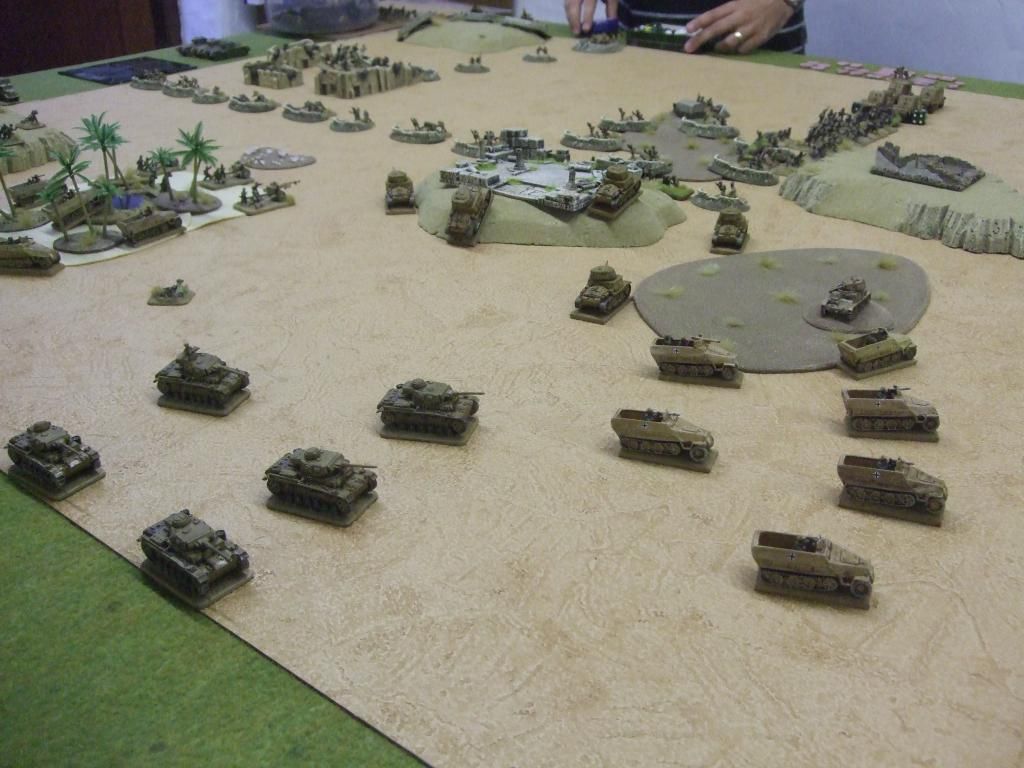
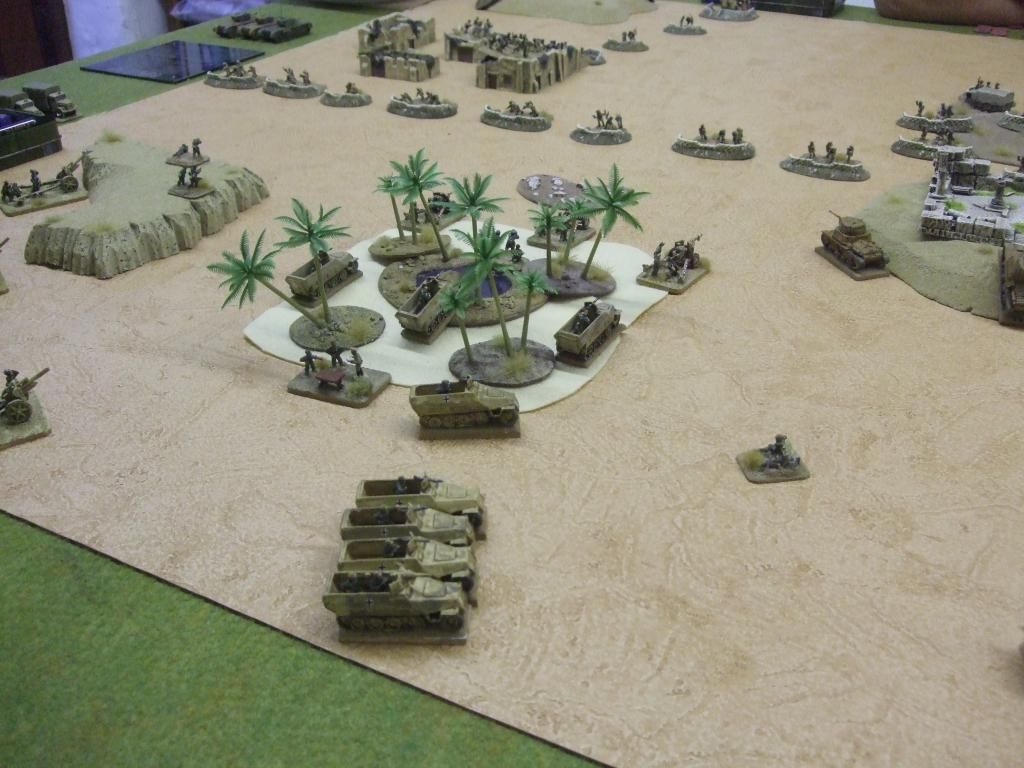

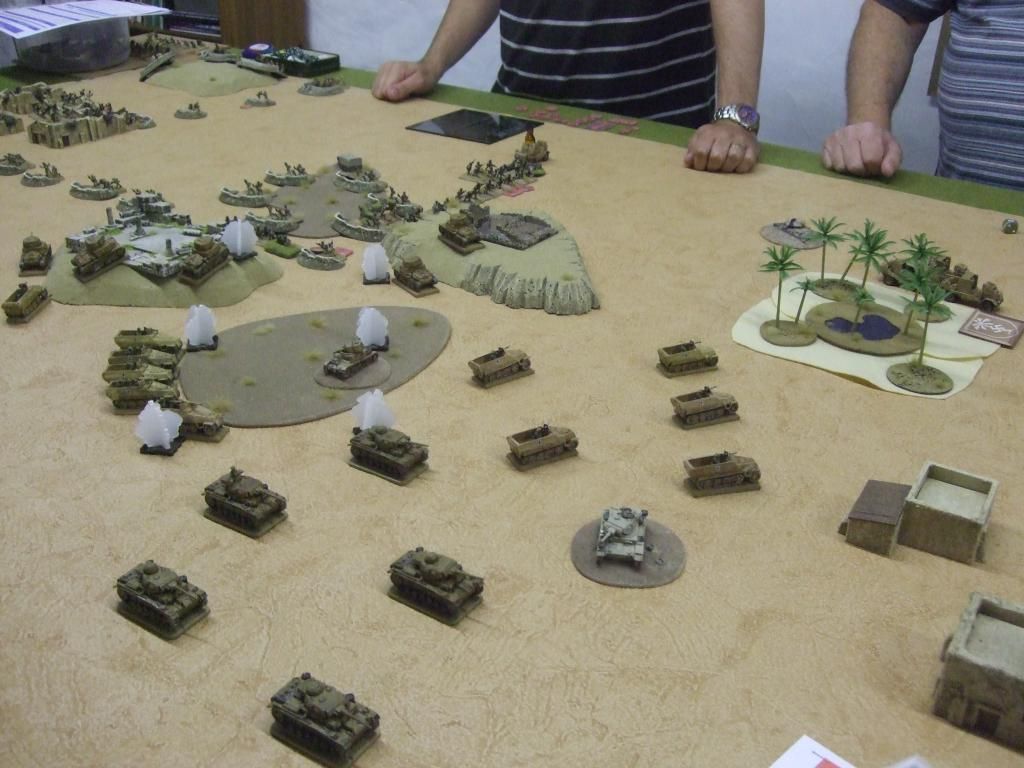

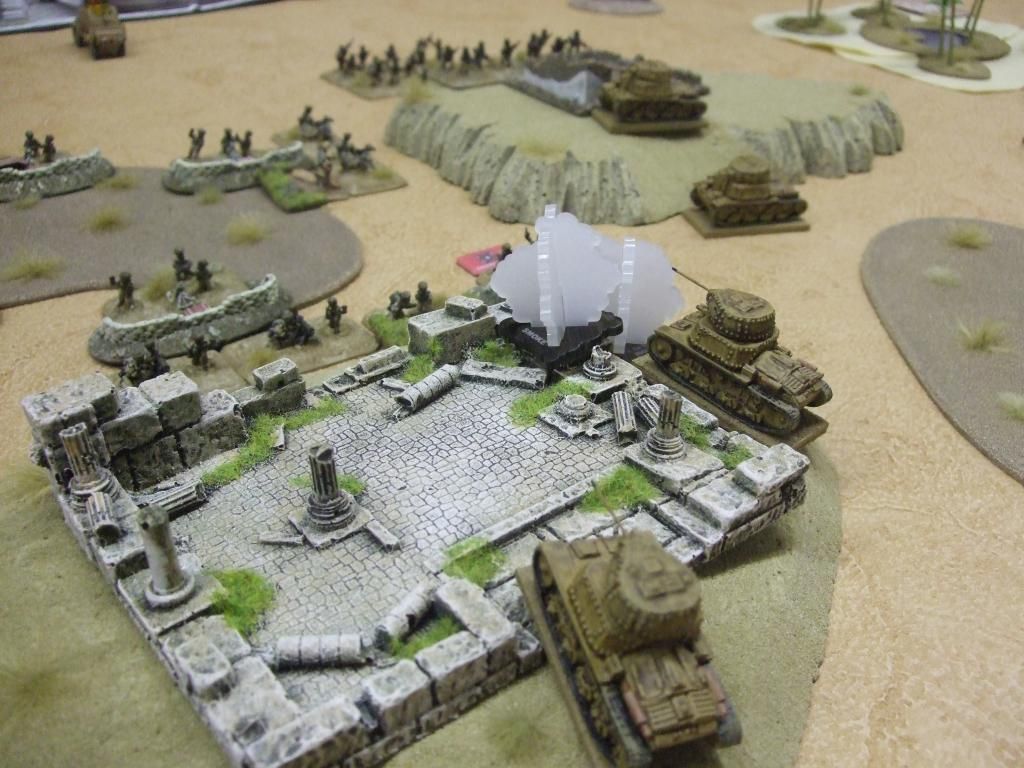

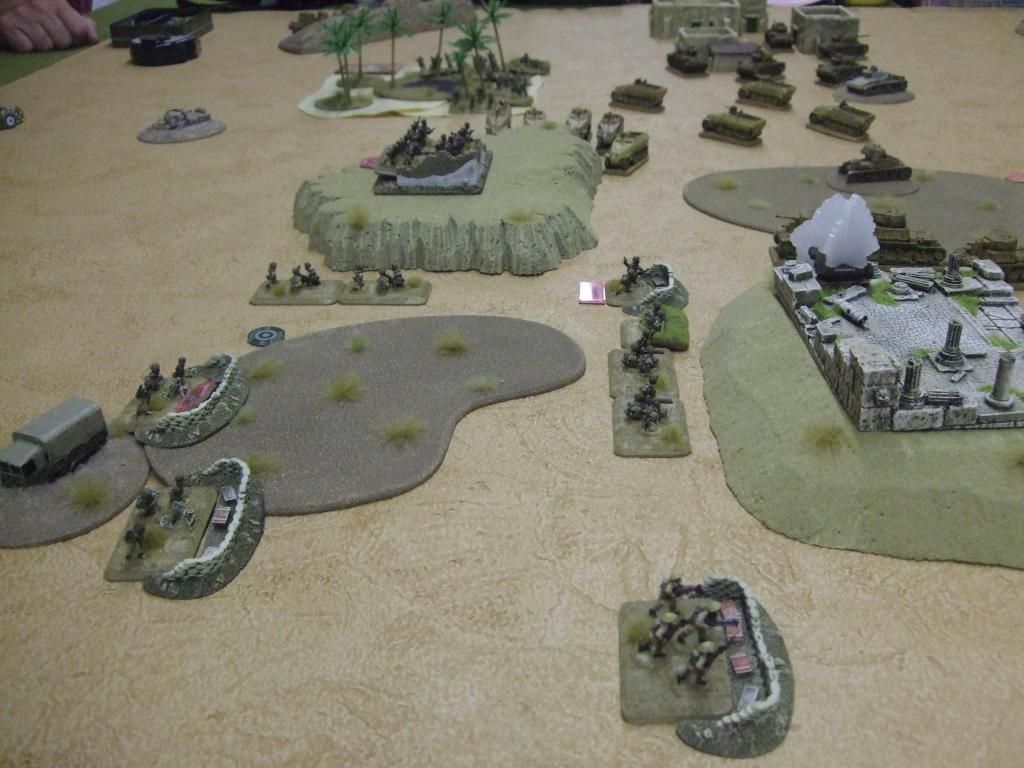
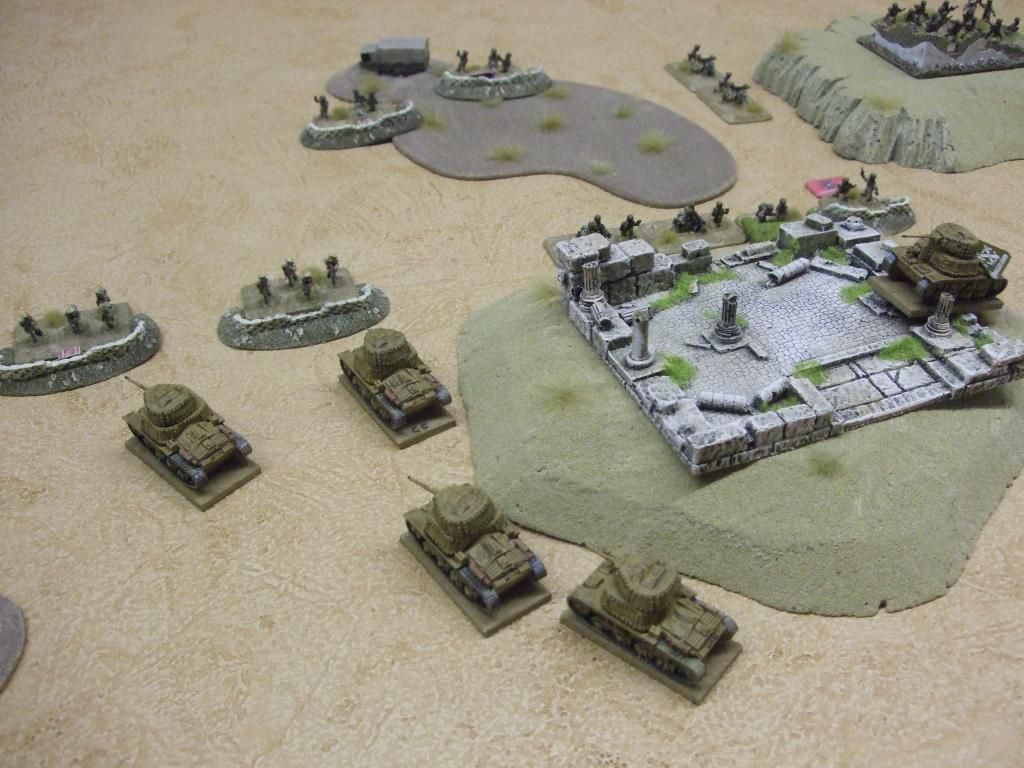
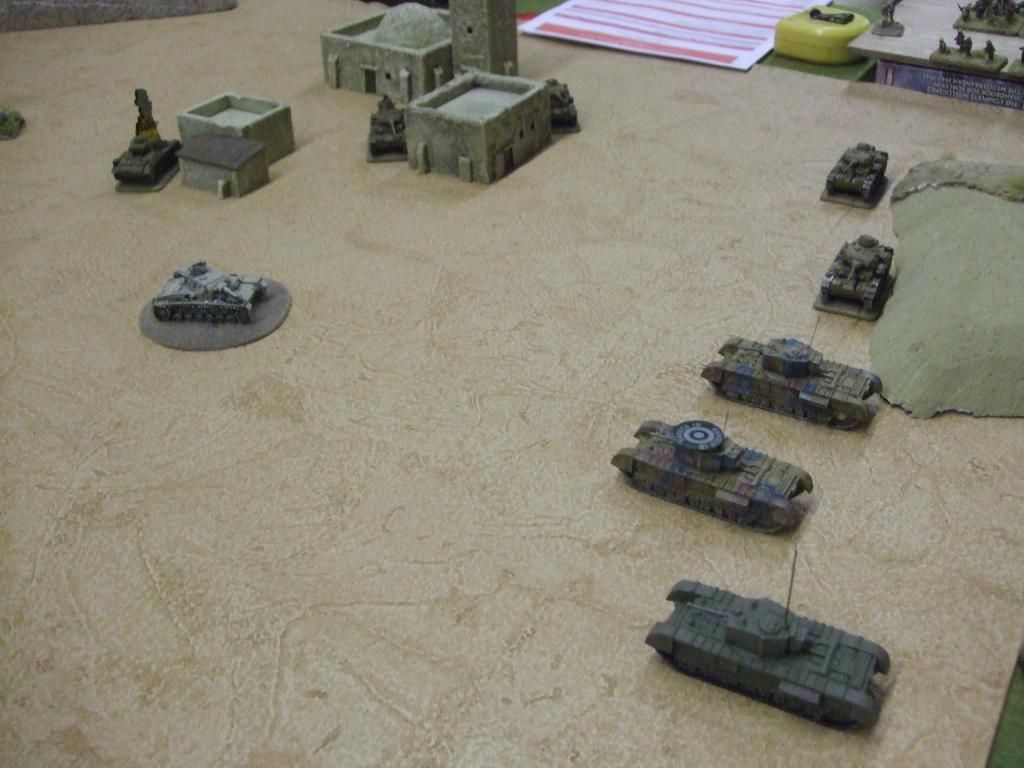
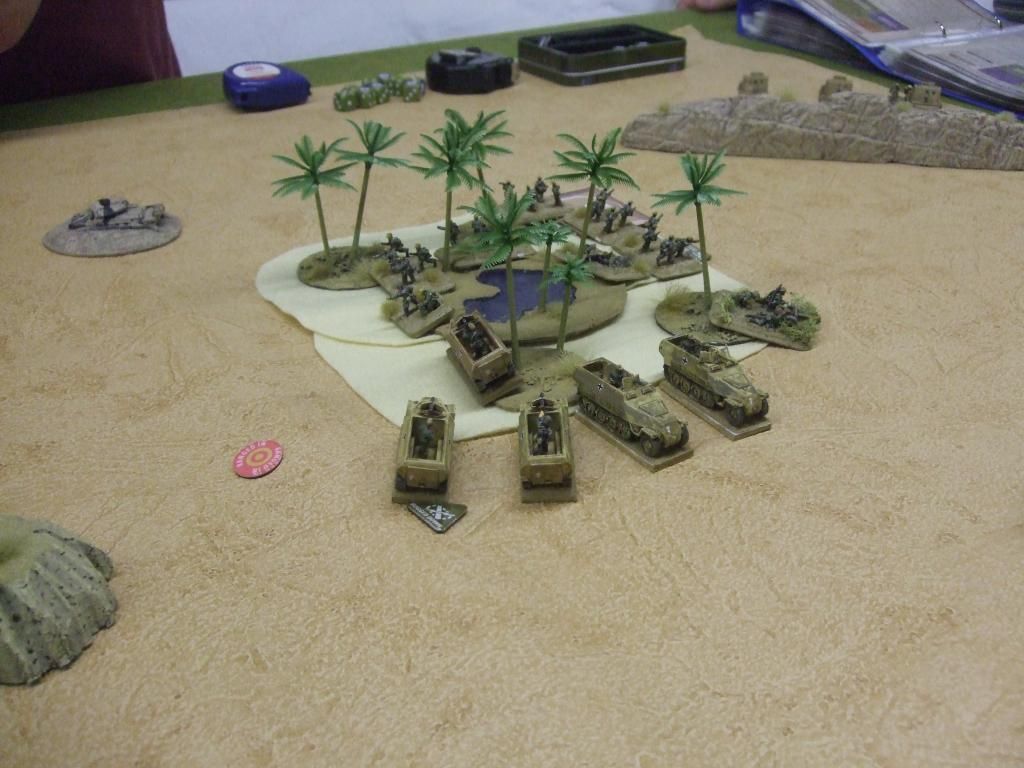

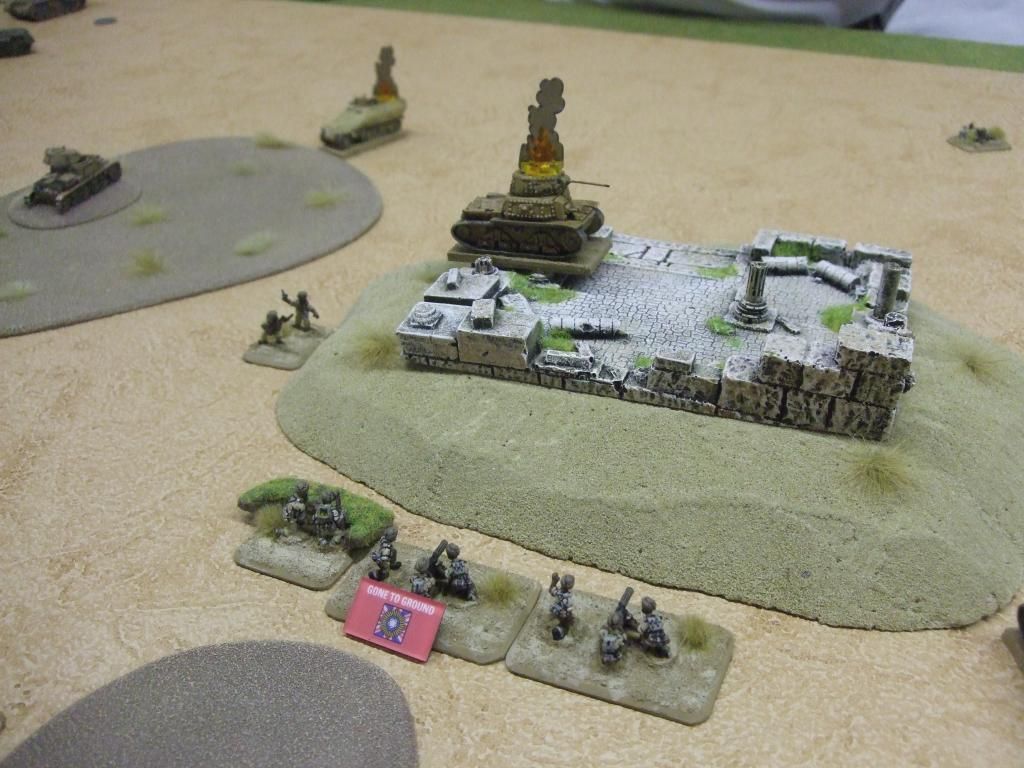
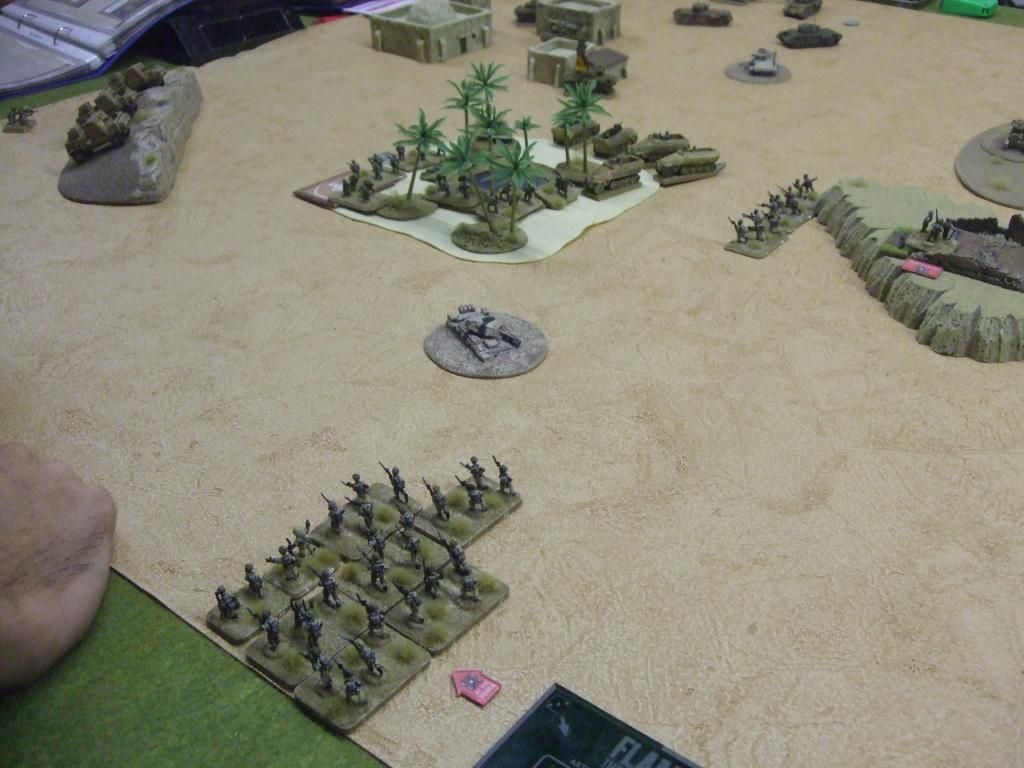
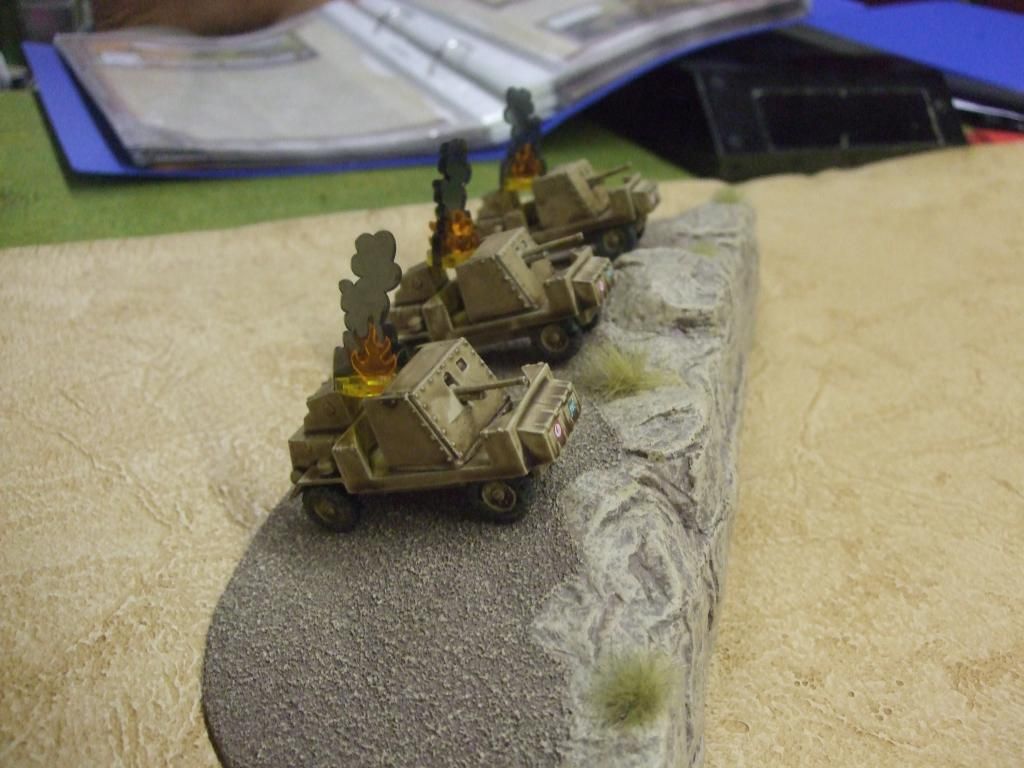
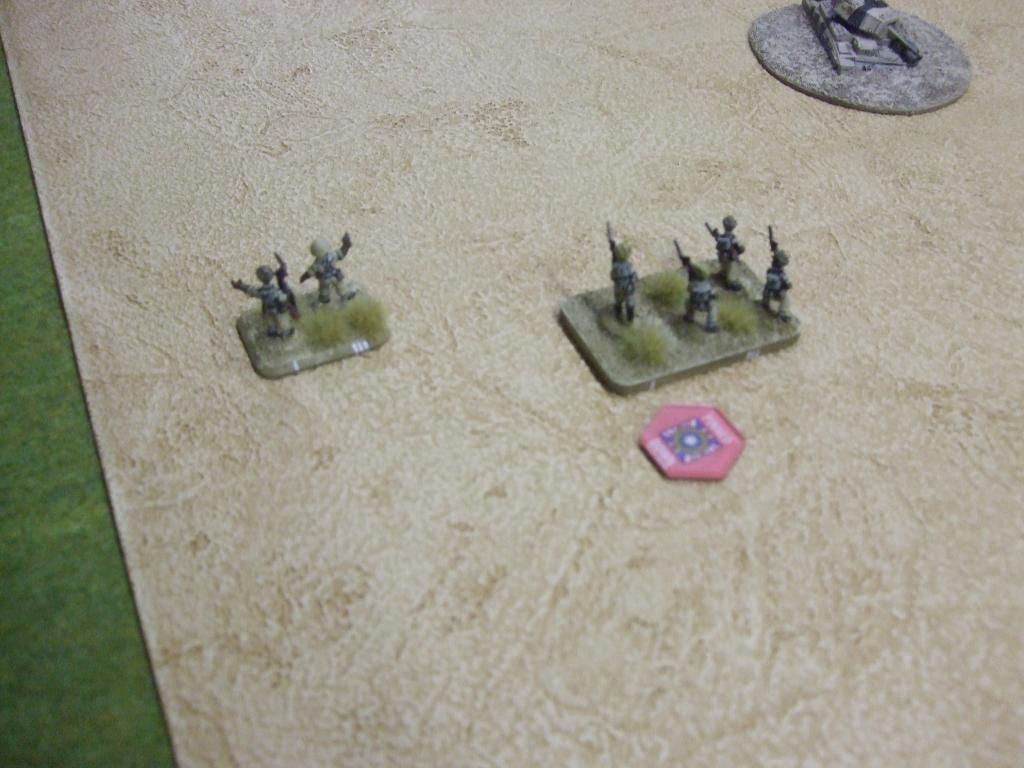

No comments:
Post a Comment